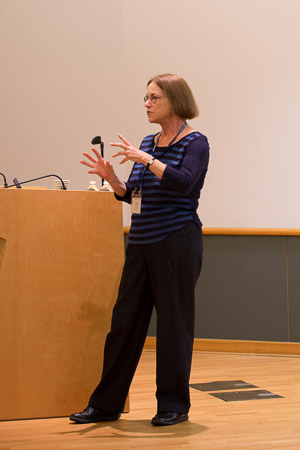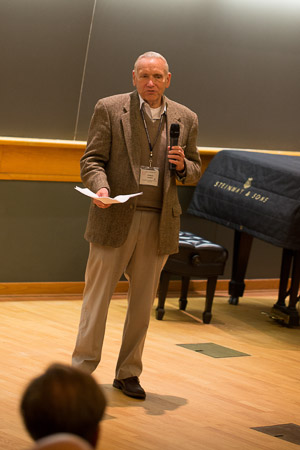In 1989, Dr. Aggarwal initiated structural studies on the restriction enzyme BamHI, in collaboration with Dr. Schildkraut of New England Biolabs.
Dr. Aggarwal reported the structure of BamHI in 1994, and structure of the enzyme in complex with DNA in 1995. Dr. Aggarwal continued working on restriction enzymes and reported a number of other structures, including FokI (1997) and SfiI (2005).
More recently, his lab has collaborated with Drs. Morgan, Roberts, and Xu to elucidate structures of MmeI and other enzymes. Dr. Aggarwal is currently a Professor of Structural and Chemical Biology at the Mount Sinai School of Medicine.

In his broad, interdisciplinary undergraduate education in natural sciences at the ETH Zürich, Werner Arber majored in experimental physics. In 1953 he started his postgraduate work as an electron microscopist at the Biophysics Laboratory of the University of Geneva, mainly working with microorganisms. This led him to also get engaged in microbial genetics. In his PhD project he succeeded in identifying the genome structure of the Gal transducing bacteriophage lambda as a hybrid between the phage and its host bacterium. This showed how some viruses serve in nature as gene vectors. During this early period of investigations and in his postdoctoral work, he benefited from intensive contacts with mentors who belonged to the so-called phage group. Some of these persons (Jean Weigle, Joe Bertani) had also investigated the phenomenon of host-controlled modification of bacteriophages. After his return to Geneva in 1960, Arber started to study radiation effects on microorganisms. In preparing the appropriate bacterial and phage strains, he encountered host-controlled modification. On the basis of available knowledge on the structure of DNA and of its semiconservative replication, he and his collaborators succeeded in showing that bacterial and phage DNA carry strain identification marks (modification) and that unmodified DNA becomes degraded upon entry into the restricting bacteria (2 publications in Mol.Biol.1962). These conclusions were later confirmed and extended in Arber's and in other laboratories. At an EMBO workshop held near Basel in 1972 on Restriction and Modification, the participants discussed in an evening session conjectural risks of some applications of isolated restriction enzymes, in particular for the in vitro construction of recombinant DNA molecules and their subsequent use. This and the more profound debates at the Asilomar Conference in 1975 stimulated Arber to carefully study molecular mechanisms of spontaneous genetic variation in microorganisms. His goal was to compare natural processes of genetic variation, including horizontal gene transfer, with envisaged experimental procedures to construct recombinant DNA for their use in structural and functional genetic studies and in envisaged applications.

Tom Bickle studied biology at the University of Geneva. His introduction to DNA restriction came during his diploma thesis in the laboratory of Werner Arber. Some of this work was published in Virology in 1969. This was followed by a doctorate at the University of California, Davis on ribosomal structure.
In the early 1970s at a meeting in San Francisco, he met Werner Arber who mentioned that he was moving to an exciting new institute called the Biozentrum that was about to open in the Swiss city of Basel. In 1973 Bickle joined the group of Robert Yuan at the Biozentrum with an EMBO long-term fellowship to work on Type I restriction enzyme mechanisms.
He founded his own group at the Biozentrum in 1977, which worked mainly on DNA restriction and modification (R/M) systems until Bickle retired at the end of 2005. The group published research on all the major R/M systems: Types I, II, III and IV.

Unbeknownst to him at the time, Herb Boyer became involved with RM mechanisms while a graduate student. Observing anomalous results in bacterial mating experiments with different strains of E. coli, he shortly proved these to be the result of restriction of exchanged DNA and mapped the genes for E. coli K and B restriction and modification genes.
With the primary objective of using the enzymes for eventual structural studies to elucidate mechanisms by which proteins recognize specific sequences, he began his career at UCSF. After several years attempting to purify E. coli B RM enzymes his lab started to explore R-factor controlled RM enzymes. One of these was the EcoRI restriction endonuclease that generated cohesive termini. In a collaboration with Stanley Cohen's laboratory, Boyer's lab used Eco RI to recombine DNA in vitro to generate new combinations of plasmids viable in bacterial cells.
Along with the technologies of sequencing DNA, synthesizing DNA, and in vitro DNA recombination Robert Swenson and Herb Boyer started the first biotechnology company, Genentech.
Dr. Xiaodong Cheng is a Georgia Research Alliance Eminent Scholar and Professor of Biochemistry at Emory University School of Medicine. He was educated in China (B.Sc., Fudan University, 1982) and moved to the USA, where he received a Ph.D. in Protein Crystallography at SUNY Story Brook in 1989.
He subsequently moved to Cold Spring Harbor Laboratory in 1990. It was at Cold Spring Harbor where he began a fruitful research collaboration with Dr. Richard J. Roberts that led to the discovery of DNA base flipping.
In 1997, he moved to Emory where his current work focuses on epigenetic methylation.
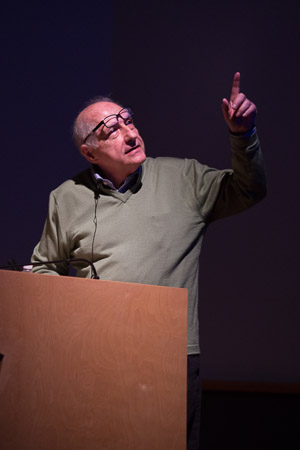
Jack Chirikjian was recruited by Georgetown University as a tenure-track faculty from Princeton to establish a graduate program on nucleic acid enzymology and to support the graduate program. While at Princeton he consulted for Pharmacia on several projects.
Early on at Georgetown he was the scientific founder and served as chairman of Bethesda Research Laboratories (BRL). The company introduced key reagents for molecular biology including restriction enzymes. BRL merged with Gibco to form Life Technologies, Inc. (LTI).
He also was a founder of Oncor where he positioned probe technology as early DNA based diagnostic tools. He then founded Trevigen which offers reagents for cellular and molecular biology. He continues to pursue his academic career at Georgetown University.
Stephen Halford's PhD and post-doctoral research, from 1967-76, had been mainly with Freddie Gutfreund, using rapid-reaction kinetics and other biophysical methods to examine the dynamics of enzymes such as alkaline phosphatase, lysozyme and Β-lactamase (the latter with Mark Richmond) acting on discrete substrates.
Stephen started his own laboratory 1977 and adopted suggestions from his previous supervisors that he should apply similar biophysical methods to a newly discovered class of enzymes, the restriction endonucleases. These were only just becoming available at that time but, due in large part to invaluable help and guidance from Ken and Noreen Murray, Stephen was able to start work on them. Essentially all of Stephen's subsequent research has been on enzymes acting at specific DNA sequences, primarily the Type II restriction enzymes (albeit with a brief excursion into the Type I restriction systems) but also for extended periods on site-specific recombination proteins.
Stephen's first work on restriction enzymes was on EcoRI, one of the few available in 1977, but for technical reasons he soon switched his main focus to EcoRV. Studies on EcoRV revealed how it discriminated between alternative DNA sequences, cleaving its recognition site over a million times faster than any other yet binding to all sequences with similar affinity. EcoRV also revealed how a protein travels from its initial non-specific site on a long DNA to its final specific site, largely by dissociation/re-association events within the same chain.
As more restriction enzymes were discovered, many were found to recognise more complex sequences than the simple 6 bp palindromes of EcoRI and EcoRV, so, at the suggestion of Ira Schildkraut, his laboratory took up one such enzyme, SfiI. SfiI was found to differ from the EcoRI- and EcoRV-like enzymes not only in the nature of its recognition sequence but also more radically in its mode of action: It has to bind simultaneously to two copies of its recognition sequence, from separate locations in the DNA, and then proceeds to cut both strands at both sites in a single DNA-protein complex. Many restriction enzyme have since been shown to cleave DNA only after spanning two DNA sites, sequestering the intervening DNA into a loop. These have proved to be highly amenable systems with which to analyze the general processes of DNA synapsis and looping, more so than the site-specific recombination systems studied previously. Recent studies at Bristol have extended knowledge of the diversity of the Type II restriction endonucleases, many of which bear little resemblance to the classical systems first discovered in the 1970s: R.Hin, EcoRI, BamHI and so forth.
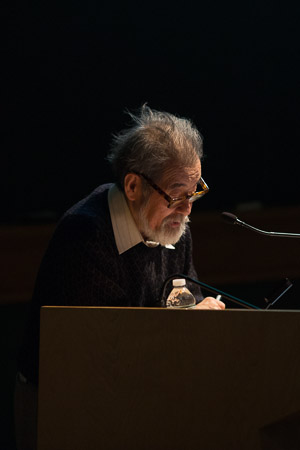
Starting in 1969, Ken Horiuchi worked on EcoB restriction enzyme in Norton Zinder's lab at Rockefeller University and showed that the SB sites (recognition sites) are not the actual sites of cleavage (1972).
He continued working on restriction and modification activities of EcoB, cleavage mapping of filamentous phage f1, site-specific cleavage of single-stranded DNA by HaeIII, and mechanism of DNA replication of phage f1.
He is currently, professor emeritus, National Institute of Genetics, Japan; and senior research associate, Rockefeller University (Ravetch Lab).
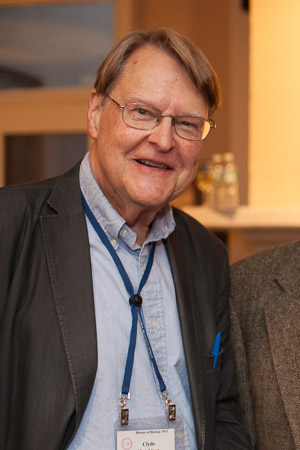
Clyde Hutchison received a B.S. in Physics from Yale (1960). His Ph.D. work, in the laboratory of Robert L. Sinsheimer at Caltech, concerned the genetics of bacteriophage phiX174.
In 1968 he joined the faculty of the University of North Carolina at Chapel Hill. There he collaborated with Marshall Edgell to develop a marker-rescue assay for DNA fragments, which they used to map phiX174 genes to specific restriction fragments. They also used restriction enzymes to demonstrate maternal inheritance of mitochondrial DNA in mammals.
Hutchison spent a sabbatical in Fred Sanger's lab in Cambridge, England (1975-6), where he took part in sequencing the genome of phiX174. Hutchison met Michael Smith in Sanger's lab.
Upon his return to Chapel Hill, they collaborated to develop the method of site-directed mutagenesis (1978).
His current interest is the design and complete chemical synthesis of a minimal cellular genome.
He is Distinguished Professor in Ham Smith's Synthetic Biology Group at the J. Craig Venter Institute, San Diego, California, and Kenan Professor Emeritus at the University of North Carolina at Chapel Hill.
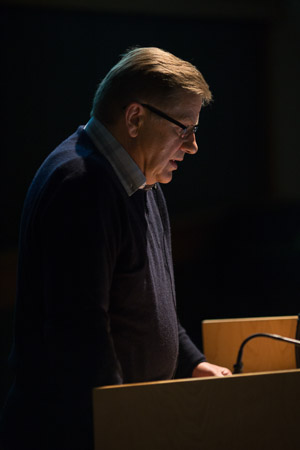
Arvydas Janulaitis studied biochemistry and genetics at the Sankt Peterburg University. This was followed by a doctorate in biochemical genetics of yeast at the same university.
In 1975 he was invited to lead restriction enzyme (RE) R&D at the All Soviet Union Institute of Applied Enzymology (in 1992 it was renamed as the Institute of Biotechnology - IBT). The research in which he was involved until 2008 (since 2003 as the Director of the Research Center of the company Fermentas) covered screening bacterial strains for Type II REs, characterization of the discovered REs and methyl transferases, their evolution in vitro and development of commercial products.
Parallely in 1983 he initiated and until 1994 was actively involved in R&D of recombinant human proteins as pharmaceuticals.
In 1995, together with leading colleagues, he founded two companies (Fermentas - in 2010 acquired by the Thermo Fisher Scientific; and Biofa - now part of the Teva Pharmaceuticals) and privatized them together with employees using voucher privatization.
In 2011 he joined IBT.
His present interests include molecular diagnostics and protein evolution in vitro. In 1994 he received a National Prize in Science; and in 2006 a National Progress Award for Partnership and practical implementation of research results.

While a Helen Hay Whitney Postdoctoral Fellow in Werner Arber's Laboratory, Stu Linn helped to describe the restriction and modification of bacteriophage fd replicative form DNA by the E. coli B system.
During 1968-1979 as a faculty member at Berkeley, his laboratory described the catalytic properties and subunit structure of the E. coli B methylase and endonuclease.
They went on to isolate oligonucleotides from phage fd replicative form DNA and SV40 DNA, which contained the methylation sites for the methylase—and ultimately the sequence recognized by the two enzymes.
They also showed that upon restriction, the EcoB enzyme released oligonucleotides, and by electron microscopy, were able to show that the enzyme traveled from the recognition site, holding onto the recognition site so as to form a looped DNA intermediate. Finally, the enzyme cleaved the DNA as many as several thousand base pairs from the initial recognition site, apparently at random sequences.
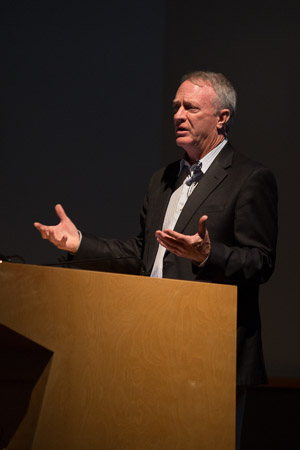
Bill Linton founded Promega in 1978 and has served continuously as Chairman and CEO of the company. A life science research company, Promega has grown from one employee to a global corporation, employing 1300 people worldwide. Along with direct sales and a distributor network, Promega serves customers in more than 100 countries with sales and manufacturing branches in Australia, Brazil, China, Japan, Singapore, France, Korea the Netherlands, Switzerland, the United Kingdom, Germany, Italy, Spain, Sweden, Sunnyvale, CA, and San Luis Obispo, CA. Initially supporting university researchers, Promega now serves scientists in basic research, drug discovery, forensics and molecular diagnostics. The company continues to be privately held with revenues around $350 million.
Collaboration and partnering continue to be cornerstones of the Promega model. In the late 1980s, Promega established through joint venture several of the earliest biotechnology companies in the People's Republic of China: Sino-American Biotechnology Company (SABC) and Shanghai-Promega (SP) Biochemicals Company LTD. SABC was subsequently divested and SP is now a wholly-owned Promega branch. Promega continues to promote and support partnering in order to best serve customers and ultimately facilitate scientific discovery.
That same philosophy extends to community support. In 1991, Promega established Woods Hollow Children's Center (WHCC), providing infant through school-age childcare for the local community as well as Promega employees. In 1993, the BioPharmaceutical Technology Center Institute (BTCI), a non-profit education, science and cultural institute, was established. BTCI offers learning access to local middle school through global university students, and ages beyond, through its nationally-known Annual International Bioethics Symposium and summer applications courses. Promega has long been a financial supporter of various arts and education pursuits. As an employer, Promega is recognized for creating an "employee as individual" workplace, acknowledging and supporting work-life balance and nurturing personal and professional creativity and innovation.
Bill Linton has served on a number of industry, government and community boards. He is a member of the board of directors of the Analytical, Life Science and Diagnostics Association (ALDA, formerly ALSSA), and has served as past chairman of ALSSA. He is lead director of Bruker Biosciences and a board member of the Wisconsin Technology Council. He received a BS in Biological Sciences from University of California, Berkeley and did post-graduate work at the University of Wisconsin Madison pharmaceutical chemistry program. In 2004, Bill received an honorary doctor of philosophy degree from Hannam University (Taejon, Korea) in recognition of his global support for the advancement of technology and support of education in the life sciences.

Dr. Arvydas Lubys received his master's degree in genetics from the Vilnius University and, after graduation, joined Institute of Biotechnology (IBT) in Vilnius.
After serving for several years in various positions, in 1995 he became the head of a newly established laboratory at IBT, which was fully dedicated to systematic studies of restriction-modification systems, and two years later he received his Ph.D. in biochemistry from Vilnius University (ab externo).
Later, a research team led by Dr. Lubys concentrated on investigating the structural organization of multiple restriction-modification systems, discovered mostly at IBT.
At that time, Dr. Lubys research interests encompassed the genetic regulation of RM systems; biochemical features of restriction enzymes and their mutants to better understand how these enzymes recognize and cleave their target DNA; and efforts to change some of these properties artificially.
Dr. Arvydas Lubys and his team succeeded in engineering the first artificial nicking enzyme and in constructing the first restriction endonuclease with artificially altered specificity.
In 2003 Dr. Lubys moved from academia to industry, taking a position of deputy director for research at Fermentas UAB. In 2005-2009 he applied his strong background in both cloning and restriction-modification systems to initiate and successfully run a project to clone of commercially important restriction endonucleases, resulting in more than 60 overproducing strains. Soon after Thermo Fisher Scientific acquisited Fermentas UAB in 2011, he was appointed to the position of Director, Research & Development for Molecular Biology Products, which is his current job title.
Dr. A.Lubys has published 26 scientific publications, which reflect his interest in restriction-modification phenomenon. He is named as co-inventor on four patents/patent applications filed in the US and EPO. Also, he serves as professor at the Vilnius University.
Dr. Richard D Morgan received a BA in History from Wheaton College, IL in 1981 and an MA from Gordon-Conwell Seminary in 1986. He transitioned to molecular biology in 1984, and while studying pre-medicine sciences at Gordon College, MA began looking for new restriction enzymes as a research project under Dr. Russ Camp. At Gordon he discovered EagI (from a sample collected using a McDonalds cup) and several other new restriction endonucleases (RE).
He began work at New England Biolabs in 1985. Over the years his lab at NEB has discovered and characterized nearly 20% of the currently known Type II RE prototypes. He began work to engineer restriction enzyme specificity in 2006 when he cloned the Type IIG enzyme MmeI and noticed a number of close homologs from bacterial genome sequences. Cloning and expression of these homologs revealed they had distinct recognition sequences despite having highly similar protein sequences. From these findings he identified co-varying amino acid and DNA base positions that when mutated change DNA specificity.
In 2009 he received a PhD in bioinformatics from Boston University for this work engineering full DNA specificity change in Type II restriction enzymes.
Current research interests include discovery and characterization of RE and DNA methylases, investigation into the protein-DNA binding interactions that determine specificity for particular DNA sequences, protein engineering of RE and the evolution, distribution and function of restriction-modification systems in microbial populations. Rick has published 35 papers and been awarded 50 patents.
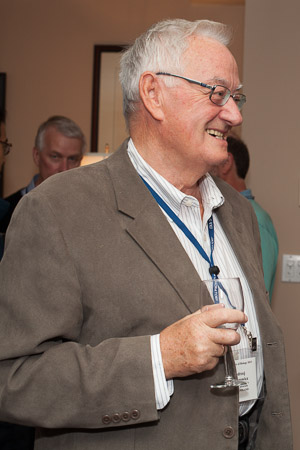
In 1957–1962 in studied microbiology at the Faculty of Biology Warsaw University and graduated in 1963 with the degree of Master of Science in Microbiology.
In years 1964–1969 he prepared at the same institution a PhD thesis concerning conjugation in Escherichia coli. During this time he noticed that the donor DNA of some E. coli Hfr strains resistant to edeine was probably restricted in female cells. After receiving in 1970 a fellowship from the European Molecular Biology Organization (EMBO) he joined Dr S. Glover's group at the University of Edinburgh and started to work on the phenomenon of restriction and modification of DNA in bacteria using as a model H. influenzae types Rd, Ra, Rb Rf and Re. This work was later continued when he returned to Warsaw University (between 1974–1984) and continued in collaboration with Dr T. Bickle from the University of Basel. On the bases of genetic and enzymological studies he defined the existence of Type III RM systems. He also showed that such systems can undergo phase variation. The enzymological studies allowed him to establish that Type III restriction enzymes need the presence of at least two sites in cis on the DNA molecule for effective cleavage and that S-adenosylmethionine inhibits restriction activity.
At the same time he started to work on Type I restriction modification systems encoded by E. coli plasmids (RM EcoDXXI) and he showed that this system represented a new group of Type I RM systems named as Type Ic. Using Tn mutagenization he also showed that it is possible to obtain mutants showing different specificity.
In 1985, at the invitation of Dr R. Yuan, he started collaboration with Dr. D.C Stein from the University of Maryland on the characterization and cloning of the specific genes encoding DNA methyltransferases by Neisseria gonorrhoeae. It was shown that each of the strains tested contained up to 12 -15 different such enzymes.
To clone the genes responsible for production of these enzymes he developed a specific genetic system which was patented. This system allowed cloning of unknown genes encoding DNA methyltransferases. Some of the cloned DNA methyltransferases were part of Type I RM systems.
In years 2006–2011, he started to work on prophages integrated into the N. gonorrhoeae chromosome. He have shown that they are responsible for production of biologically active phages belonging to two groups: filamentous and tail phages. He is now focused on studying their role in the pathogenicity of these bacteria.
Alfred Pingoud did his PhD and postdoc work on aspects of protein biosynthesis, with a focus on the mechanism of the aminoayclation of tRNA and the transfer of aatRNAs to the ribosome. Alfred was interested mainly to find out what makes these processes so accurate. When in the mid seventies the first enzymological studies on EcoRI were published, he was intrigued by the question of how EcoRI and other restriction enzymes find and recognize their recognition sequence in the vast excess of more or less related sequences, and later; whether the enzymes of this quickly growing family of enzymes of related function have a similar mechanism of action and are evolutionarily related.
Alfred and his colleagues started with steady-state and fast kinetic studies on EcoRI and soon also EcoRV, which were accompanied by the analysis of the recognition mechanism using modified oligonucleotide substrates and later site-directed mutants of EcoRI and EcoRV. These studies were followed by comparative analyses of restriction enzymes that recognize similar sequences, to establish an evolutionary relationship. Three questions have dominated my work on restriction enzymes from the early days until today:

Mila conceived and spearheaded numerous grant-supported digitization projects, among them the ongoing CSHL Oral History Project and the Josiah H. Macy Digital Collection. She has co-curated many exhibits, including Honest Jim: James D. Watson, the Writer, which has been displayed at major universities worldwide; and she has organized meetings on topics ranging from Open Access to the History of DNA. Most recently, the CSHL Archives was chosen as the only institution outside the UK to contribute to the major international digitization project, Codebreakers: Makers of Modern Genetics, supported by the Wellcome Trust.
Mila continues to present talks at national and international conferences such as the Oral History Conference, Memory and Globalization, in Rome, and the History of the Human Genome Project in Gothenberg, Sweden.
Mila was instrumental in the establishment of the Genentech Center for the History of Molecular Biology and Biotechnology at CSHL in 2006. The Center's mission is the advancement of scholarship in the history of molecular biology and biotechnology.
Mila earned an MLS and an advanced degree in Information Science in Minsk and Moscow. She holds a second MLS from St. John's University, NY.

Sir Richard Roberts is the chief scientific officer at New England Biolabs, Ipswich, MA.
He received his Ph.D. in organic chemistry from the University of Sheffield and then moved to Harvard University in 1969 to work with Professor J.L. Strominger.
In 1972 he moved to Cold Spring Harbor Laboratory under Dr. J.D. Watson, eventually becoming assistant director.
He first worked on the newly discovered Type II restriction enzymes in 1972, and in the next few years more than 100 such enzymes were discovered and characterized by his group. Cloning of the genes for several RM systems followed, and studies of these enzymes have been a major research theme.
Work on Adenovirus-2 led to the discovery of split genes and mRNA splicing in 1977 and he received the Nobel Prize in Physiology or Medicine for this work in 1993.
The 35,937 nucleotide DNA sequence of the Adenovirus-2 genome was completed in 1985. This required the extensive use of computer methods, both for the assembly of the sequence and its subsequent analysis, and many of the key programs required were first written by his group. The further development of computer methods for protein and nucleic acid sequence analysis continues to be a major research focus.
The field of DNA methyltransferases is also an area of active research interest, and crystal structures for the HhaI methyltransferase both alone and in complex with DNA were obtained in collaboration with Dr. Xiaodong Cheng. From this work came the discovery of base flipping in 1993, whereby the target cytosine base that becomes methylated is flipped completely out of the helix so that it is accessible for chemical reaction.
A consuming interest at present is the semi-automatic identification of restriction enzyme and methylase genes within the GenBank database and the development of rapid methods to assay function.
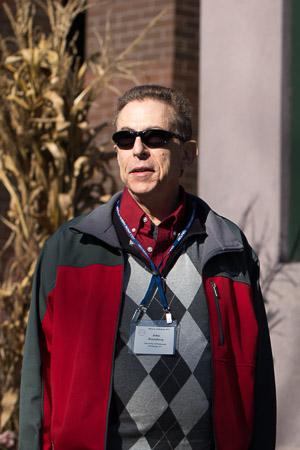
John Rosenberg received a B.S. from Case-Western University (then Case Institute of Technology) in 1967 and a Ph. D. from the Massachusetts Institute of Technology in 1973.
His dissertation research, under the mentorship of Alexander Rich and in collaboration with Nadrian Seeman included the first high-resolution crystal structures showing Watson-Crick A-U base-pairing; they also were the first high-resolution single-crystal observations of RNA double helices.
From 1973 to 1978 he was a postdoctoral fellow at the California Institute of Technology in the laboratory of Richard Dickerson.
From there he joined the faculty of the University of Pittsburgh in 1978, where he continued working on the crystal structure of a specific complex between DNA and EcoRI endonuclease, which was the first structure of a complex between a restriction enzyme and an oligonucleotide containing its recognition sequence.
In 1992 he published the WHAM method for extracting free energies from molecular dynamics simulations, together with Shankar Kumar, Peter Kollman and Robert Swendsen.
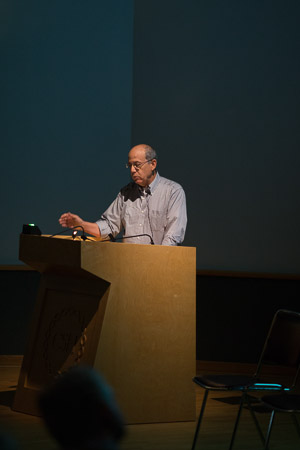
As the company grew he left the bench, became the director of research and was involved almost entirely administratively. In the late 80s he found time to put a lab together, focusing on exploiting NEB's early success in cloning and overexpressing a large number of restriction systems. They focused on preliminary crystal characterization of restriction endonucleases so that they could interest protein crystallographers in solving the structure of this intriguing group of enzymes. From there they turned to the problem of engineering these activities.
He left NEB in 2000 for an early retirement to New Mexico. Recently after being absent for nearly a decade, he rejoined NEB as scientist emeritus. He has begun looking at enzymes that are involved with or can be provoked into manipulating RNA molecules, and for fun has been playing with bioluminescence.

Hamilton Smith received an A.B. degree in mathematics from the University of California, Berkeley in 1952 and the M.D. degree from Johns Hopkins University in 1956. After six years of clinical work in medicine (1956-1962), he carried out research on Salmonella phage P22 lysogeny at the University of Michigan, Ann Arbor (1962-1967).
In 1967, he joined the microbiology department at Johns Hopkins. In 1968, he made the chance discovery or the first Type II restriction enzyme (HindII) and determined the sequence of its cleavage site.
In, 1978 he was a co-recipient (with D. Nathans and W. Arber) of the Nobel Prize in Medicine for this discovery.
Subsequently, he studied DNA methylases and nucleases in Haemophilus influenzae Rd and discovered this organism's sequence-specific DNA uptake during genetic transformation. In 1994-5 he collaborated with J. Craig Venter at The Institute for Genomic Research (TIGR) to sequence H. influenzae by whole genome shotgun sequencing and assembly. In July 1998, he joined Celera Genomics Corporation, where he participated in the sequencing of the Drosophila and human genomes.
In November 2002, he left Celera to join the new Institute for Biological Energy Alternatives formed by J. Craig Venter. In 2005, this Institute merged with TIGR to form the J. Craig Venter Institute, where he currently leads the synthetic biology group. In 2010, the group chemically synthesized a version of the Mycoplasma mycoides genome and booted it up in a recipient cell to produce the first bacterial cell run entirely from a synthetic genome. He now leads an effort to make a synthetic minimal bacterial cell.

Bruno J. Strasser, a biologist and historian of science, is professor at the University of Geneva and adjunct professor at Yale University.
He has published on the history of big data biology, international scientific cooperation during the Cold War, experimental sciences and clinical medicine, museums and laboratories, the pharmaceutical industry, and collective memory.
He is the author of a book on the history of molecular biology in postwar Europe, La Fabrique d'une Nouvelle Science: La Biologie Moléculaire à l'Age Atomique, 1945–1964 (Florence: 2006).
Focusing on the emergence of molecular biology at the University of Geneva, he discusses the intellectual and institutional contexts for Werner Arber's elucidation of the molecular mechanisms of host controlled variation.
He is currently finishing a book on the history of biomedical databases.
Geoffrey Wilson received a B.Sc. in Biology and a D.Phil. in Microbial Genetics from the University of Sussex, England.
After post-doctoral work at Edinburgh, University of California, Davis, and Yale, he joined New England Biolabs in 1980 and initiated a program to clone, overexpress and analyze Type II restriction and modification enzymes, both to improve their production, and to learn more about them.
Today, more than thirty years later, hundreds of these enzymes have been characterized, and much has been learned about their varied organizations, modes of action, catalytic mechanisms, and evolutionary relationships.
Geoffrey heads the Restriction Enzyme Research Division at New England Biolabs, and oversees a laboratory investigating the molecular mechanism of protein-DNA sequence recognition. The goal of this project is to understand how proteins discriminate their recognition sequences in DNA, and to appreciate when their specificities can be changed by intentional amino acid substitutions, and when they cannot.
Additional projects in his laboratory include remodeling restriction enzymes to perform new reactions such as DNA-nicking rather than cleavage, and assembling synthetic enzymes with novel properties by combining parts from others.
To succeed in science, James Watson advises, 'two passions is one too many.' Geoffrey embraces far too many, including back-country flying, sailboat racing, friends, family, study and travel.
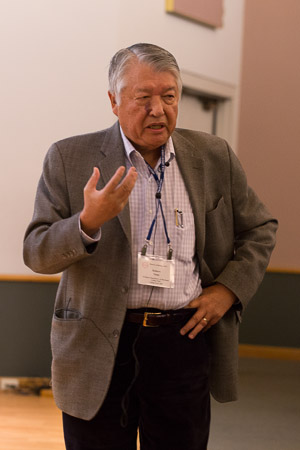
Robert Yuan has been involved in three kinds of activities during his working career.

